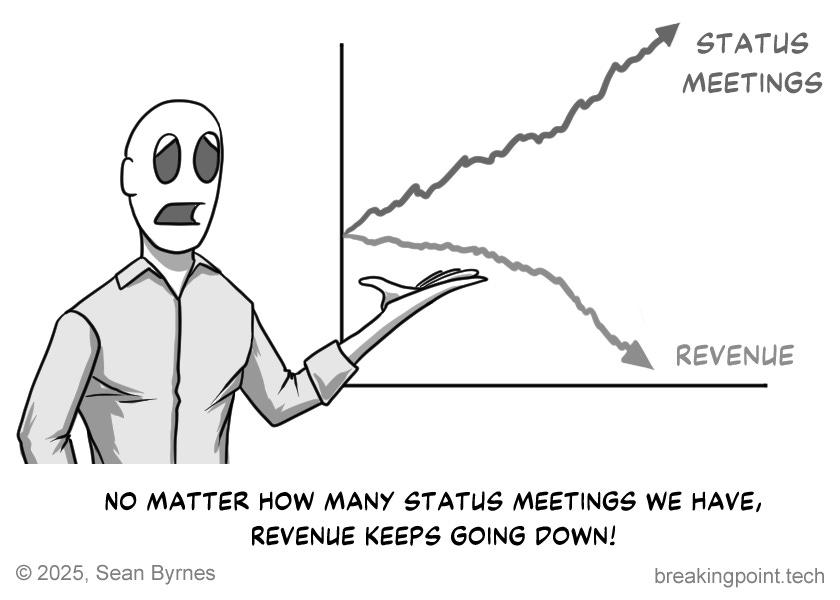Status Meetings are a Failure Mode
If you need status meetings, something went wrong.
If you liked reading this, please click the ❤️ button on this post so more people can discover it on Substack. Thanks!
Long ago, before the internet, email and software, status meetings served an important purpose. Information was hard to communicate, so status meetings became the way to do just that. A large group of people could all get educated on the status of the business, all at once.
Today, we have powerful information management and communications tools. Business intelligence tools give us immediate answers to any and all questions about the business. Email, messaging and other communication tools allow us to communicate with everyone, all the time. Information is no longer scarce or hard to come by.
So, why do companies still have status meetings?
Status is information. Information should be shared widely, immediately and without friction. The more people who know what is going on, the more people who can identify problems and work to fix them. Restricting information is unproductive as it means the organization is not working effectively.
Yet, status meetings have survived as a persistent bad habit. Leaders think they are supposed to hold status meetings, so they do. This trains the next generation of leaders that they are supposed to have status meetings. The cycle continues without any real interrogation of why status meetings exist and if they are productive.
Meetings are the most expensive thing you do at any business, and they should be reserved for making decisions and driving outcomes. You can convey status over email, internal documents and dashboards which is exactly what you should do. Everyone should know the relevant status constantly.
If you need to have status meetings, that means someone failed at communicating. If the only way to know what is going on is to have an expensive meeting, someone failed to take responsibility for communicating status some other way. It also means that you, as a leader, failed to hold that person accountable.
When I was a CEO, I made sure the status of the business was available to everyone at all times. Radical transparency meant we never waste time talking about status, as anyone could review status whenever they needed it. Meetings were reserved to talk about decisions and actions required when the status indicated they were necessary.
This sounds scary to most leaders, as it feels uncomfortable to share status with everyone. And, in fact, it might not be the right decision for your business. However, if you don’t share status widely because you don’t trust your employees then you have a much bigger problem. Your employees are adults and you need to be able to trust them.
Sometimes, leaders say they need status meetings to hold their teams accountable. Accountability is important, but is a status meeting the right way? If they are doing well, no accountability is required. If they are missing their targets, you shouldn’t need a status meeting to find out or a status meeting to hold them accountable.
I met a company whose entire executive team spent 4 hours every Monday reviewing dozens of dashboards in a status meeting. Yes, they identified areas of concern that required action. But those 4 hours were extremely expensive and unnecessary as no meeting was required for that review. All of the actions that resulted could have been easily found through offline review and meetings reserved for dealing with them.
If you have status meetings, take a hard look at why. Publish information and status about the business, and make sure all of your teams are set up to do the same. Save your business countless hours of lost productivity and use that time to take action.
If you do, your status will improve.
For more on Leadership, see:


